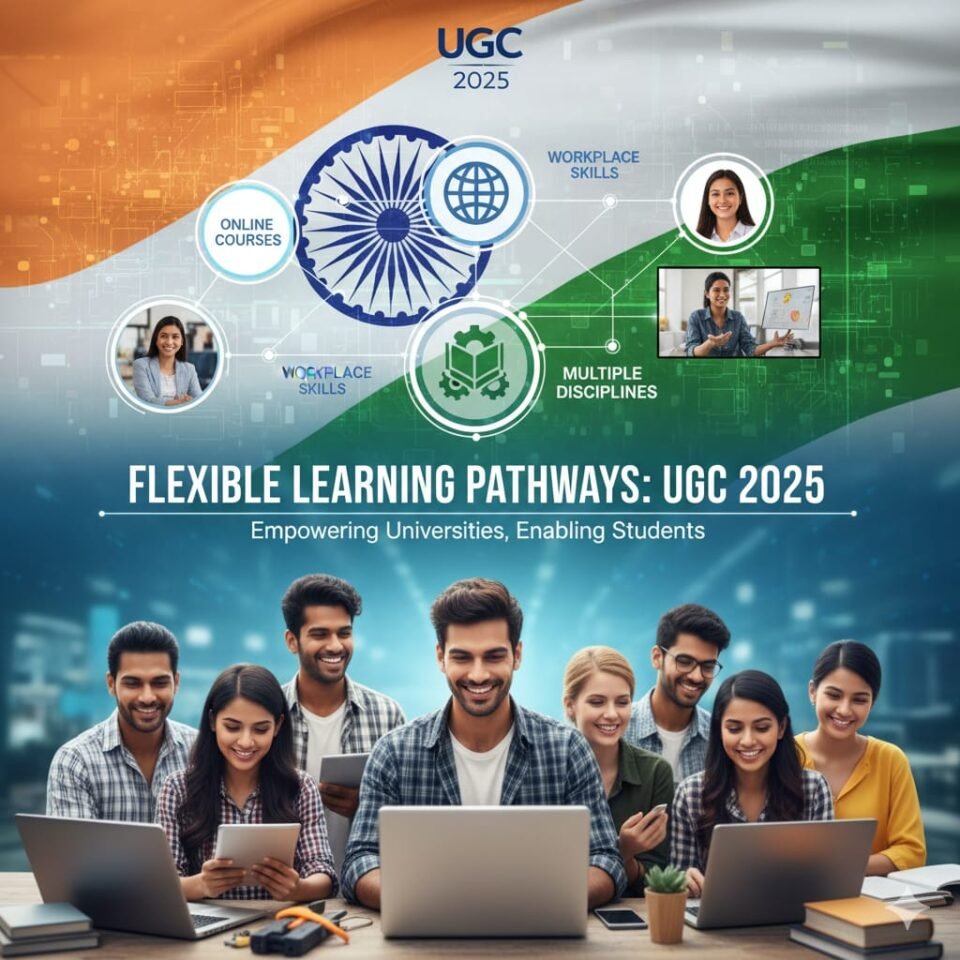How Universities Can Provide Flexible Learning Pathways Under UGC 2025
The UGC UG & PG Regulations 2025 mark a turning point in Indian higher education. Rooted in the vision of NEP 2020, these reforms allow universities to provide more flexible, inclusive, and student-centered learning opportunities.
This shift ensures that students can learn through multiple modes, balance academics with real-world exposure, and still progress seamlessly toward their academic and career goals.
1. Learning from Multiple Modes
Universities can now recognize knowledge gained outside the traditional classroom. This includes:
- Online courses from recognized platforms.
- Open and Distance Learning (ODL) modules.
- Recognition of Prior Learning (RPL), where workplace skills and industry training are formally acknowledged.
All these learnings can be officially integrated into a student’s transcript, ensuring that their diverse experiences hold value.
2. Flexible Attendance Norms
The rigid system of mandatory attendance has been reimagined. The new guidelines give universities the authority to set their own attendance requirements, aligned with program objectives.
This means:
- Students pursuing internships, apprenticeships, or entrepreneurial ventures are not penalized.
- Universities can balance classroom engagement with field learning.
- Learners from varied backgrounds can participate more actively in higher education.
3. Encouraging Multidisciplinary Learning
The new regulations encourage students to explore different fields of knowledge. A learner pursuing management may study technology, while someone in the sciences may explore business or humanities.
This flexibility ensures:
- Holistic education that matches modern career demands.
- Greater room for innovation and creativity.
- The ability to adapt to multiple career paths over a lifetime.
4. Why This Matters
The workplace today values skills + adaptability + real-world exposure. By adopting these flexible provisions, universities can:
- Empower students to blend learning and earning.
- Provide opportunities for lifelong learners and working professionals.
- Reach students in rural and remote areas without compromising quality.
✅ Conclusion
The UGC 2025 regulations empower universities to design programs that are no longer limited by rigid attendance, single-mode teaching, or outdated structures. Instead, they promote flexible, student-driven pathways where every form of learning counts.
This flexibility is not just a policy shift—it is a step toward making higher education in India accessible, practical, and future-ready.


